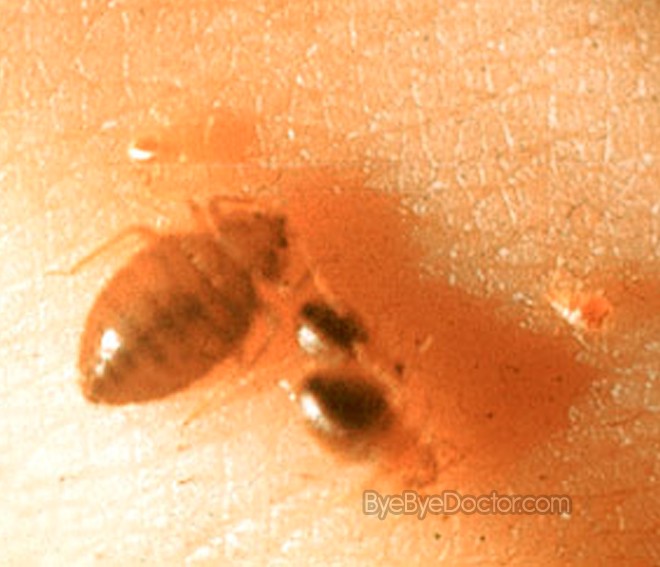Bed Bug Infestation
Last reviewed by Dr.Mary on August 7th, 2018.
If you believe that your house is harboring bed bugs, you need to check every crevasse and crack that you can recognize, from the ones behind baseboards to folds of curtains or drapes as well as every seam or tear you have in mattresses and bedding.
If you believe that bed bugs are attracted to dirt, you need to know that infestations can be managed by having a neat living space since vacuums can suck the bedbugs and eggs up, however they are more engrossed to things that live as they feed on the blood, not the filth. They are normally brought into the house from motels in luggage and they can even travel from one apartment unit to others in a unit structure.
Identifying and locating an infestation can be hard because you need to find and then catch one of the bedbugs to identify it. Once that is done, getting rid of the infestation can be just as hard.
Bed Bug Infestation Signs
Bedbug Bites
These bites are red, small bumps on the skin that itch. In the majority of cases, the bumps appear in a curve or line, indicating that the bedbug was feeding on the blood it extracted from the skin and was moving around to different feeding sites. Individuals with sensitive skin might see wheels or raised patches that are inflamed and are in a circular pattern that can be close to 8 inches across. This is an indication of allergy reaction. There are individuals who can have rash-like itching that is intense with welts that are raised and resemble hives. Blisters or fluid-filled skin inflammation in areas are also signs of bites from the bedbugs. These blisters itch and are tender to the touch and have a pus matter that is in clusters in different locations on the skin surface.
Bedding
Bedbugs move around during the night. So, if you see unexplained areas of blood on the bedding, mattresses or sheets, you can suspect a bedbug. You might even be able to see a bedbug as a tiny spot that is moving across a sheet.
Walls
Bedbugs travel from one place to another and can be found in areas other than a bed. They especially like to hide or move in to walls. Baseboards and wallpaper will have signs of bedbugs including specks of blood that look like tar. By peeling a corner or portion of old wallpaper you may find dozens or more tiny dots or specks of matter that are dark – signs of excrement from bedbugs.
Furniture
Cushions of furniture such as chairs, couches animal bedding are also places to find signs of an infestation. Look for signs of dark matter along folds or crevices everywhere.
Additional signs
Excrement left by bedbugs that are feeding have a strong sweet secretion scent. In homes or apartments with advanced infestation, this is a smell that is often mistaken for the musty sweet odor of an old house.
Bed Bug Infestation Prevention
Encasements
Encasements or mattress covers are used to enclose box springs and mattresses. They can be purchased almost anywhere. Ones that are good have zippers that stay zipped, preventing the bugs from escaping. Any bed bugs inside an encasement can’t bite thru it and eventually die. These encasements are cost effective ways to protect box springs and mattresses.
Vacuuming
Vacuuming is very important and good protection for keeping bed bugs infestation from starting. Vacuuming can pick up bed bugs but no bed bug eggs. So vacuuming is good when use with other methods of protection.
Steam
Just as vacuuming is, steam cleaning is really not very likely to eradicate all bed bugs from the house but it is a useful addition to other pesticide treatments. Steam can be useful for killing and flushing out bedbugs that are hidden in couches and other furniture where insecticide treatment is not practical or effective.
Heat
Heat such as in a microwave can destroy bedbugs. Items can also be dried such as rugs or clothing in a dryer that is hot and used for about 20 minutes. There are also heating enclosures which are portable known as PackTite and work by heating items that are infected to lethal temperatures. These are especially useful for bedbugs in luggage but might not eradicate all bedbugs in dense items for instance books.
Pesticides
Pesticides normally involve an inspection by a bug technician who can apply residual or contact pesticides directly on the bugs. The pesticides that are used can remain active for weeks.
Traps
Used alone, traps are rarely capable of getting rid of bed bug infestation. These traps are mainly monitoring devices, not control devices and should be used with other items of protection.
Bed Bug Infestation Treatment
As mentioned above, treatments for bedbug infestations involves using several methods of eradication together including:
- Encasements
- Vacuuming
- Steam
- Heat
- Pesticides
- Traps
Pesticides by a certified bug specialist is possibly the best but also the most expensive method of treating a bedbug infestation.



